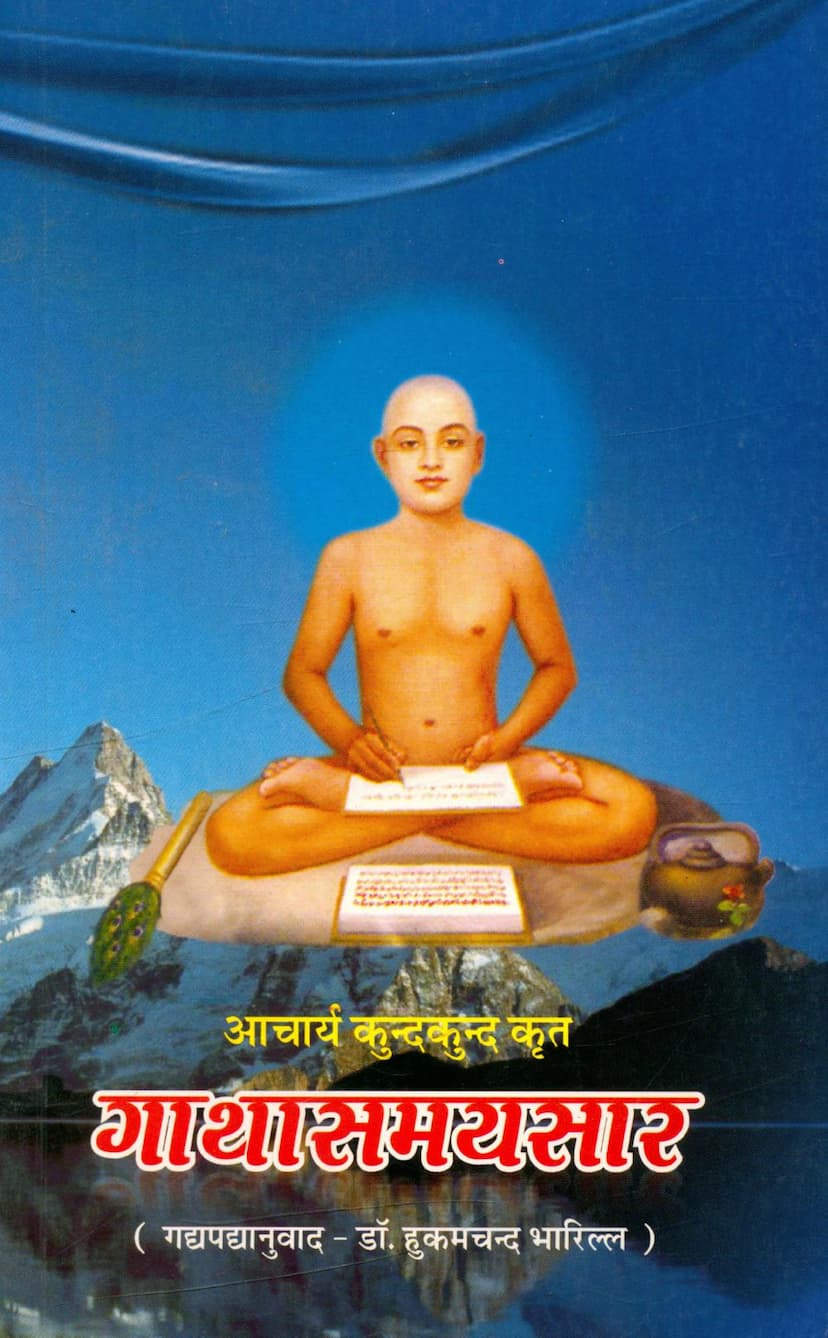Gatha Samaysara
Added to library: September 1, 2025

Summary
This document is a publication of "Gatha Samaysara" ( गाथा समयसार), a Jain text originally authored by Acharya Kundakunda and translated and explained in Hindi verse by Dr. Hukumchand Bharilla. The publisher is Todarmal Smarak Trust, Jaipur.
Here's a summary of the key information presented in the provided pages:
Book Details:
- Title: Gatha Samaysara (गाथा समयसार)
- Original Author: Acharya Kundakunda (आचार्य कुन्दकुन्दाचार्यदेव)
- Translator/Commentator (Hindi Verse): Dr. Hukumchand Bharilla (डॉ. हुकमचन्द भारिल्ल)
- Publisher: Pandit Todarmal Smarak Trust, Jaipur (पण्डित टोडरमल स्मारक ट्रस्ट, जयपुर)
- First Edition: January 26, 2009
- Price: ₹10 (for the first edition)
- Content: The book contains the original verses (Gathas) of Samaysara, their explanation, and a Hindi verse translation by Dr. Bharilla.
Purpose of the Publication: The publication is intended to be a concise and accessible version of Samaysara, suitable for:
- Students studying Samaysara in various Jain institutions (like Shri Todarmal Digamber Jain Siddhant Mahavidyalaya) who need to memorize the verses and translations.
- Individuals who want to perform collective readings of Samaysara.
- Those who wish to understand the essence of Acharya Kundakunda's teachings in a brief format.
Significance of Acharya Kundakunda and Samaysara:
- Acharya Kundakunda's Stature: Acharya Kundakunda is described as paramount in the Digambar Jain Acharya tradition, with his lineage being a source of pride for Digambar monks for two thousand years. His name is frequently invoked in spiritual discourses, and he is considered to encompass the entire Acharya tradition.
- Samaysara's Importance: Samaysara is hailed as a supreme jewel of Jain scripture, an "Agam of Agams" and the essence of numerous scriptures. It's called an "incomparable, unfading eye of the world" and is considered the highest among all scriptures. It is credited with transforming the lives of millions and influencing great saints. Its core teaching, as presented through the nine principles, is the pure knowledge-conducive soul (param shuddh nishchay-naya) that leads to true faith, knowledge, and conduct.
Structure and Content (as indicated by the Table of Contents on Page 3 and the initial verses): The book is structured to cover the core themes of Samaysara, presented through its verses. The initial pages include:
- Publisher's Note (Prakashkiya): Expressing joy in publishing this compact edition and highlighting its utility for students and readers.
- Introduction to Acharya Kundakunda: Detailing his supreme position in the Jain tradition.
- Introduction to Samaysara: Elaborating on its profound significance.
- Mangalacharan (Mungal Chhand): Verses of auspicious invocation.
- Purvarang (पूर्वरंग): The initial section of the text, including the first few verses (Gathas) that lay the foundation for the teachings. These verses discuss concepts like the nature of the soul (Jiva), the distinction between self and other (swasamay and parasamay), the beauty of "oneness" (ekatva), the importance of direct experience (anubhuti), and the concept of the pure knower (gyayakbhav). It also introduces the distinction between conventional (vyavahar) and ultimate (nishchay) truths and the nine fundamental principles (Navatattva).
Key Themes Introduced in the Purvarang (Pages 8-20):
- Invocation: Respect to the Siddhas and homage to Acharya Kundakunda and Jain scriptures.
- Self and Other (Swasamay and Parasamay): Distinguishing the soul from karmic matter.
- Ekatva (Oneness): The beauty and significance of internal oneness as opposed to external bondage.
- The True Nature of the Soul: Describing the soul as a pure, eternal, unattached knower (gyayakbhav).
- Naya (Viewpoints): Explaining the role of conventional (vyavahar) and ultimate (nishchay) truths in understanding reality.
- Nine Principles (Navatattva): Identifying the core elements of Jain philosophy (Jiva, Ajiva, Punhya, Pap, Asrava, Samvara, Nirjara, Bandha, Moksha).
- The Nature of the Soul (Nishchay): The soul is pure, without attributes of matter, unattached, and solely a knower.
- The Role of Knowledge and Conduct: The interconnectedness of knowledge, perception, and conduct, all rooted in the soul.
- The True Nature of the Doer (Karta): The soul is the doer of its own pure states, not of external karmic actions.
- The Illusion of Bondage: Identifying attachment and false beliefs as the causes of bondage.
- The Goal of Liberation: Attaining an infinite, unattached state of bliss.
The subsequent pages delve into specific "Adhikaras" ( अधिकार - chapters/topics) like Jivajivadhikar (जीव-अजीवाधिकार - on soul and non-soul), Kartakarmadhikar (कर्ताकर्माधिकार - on doer and deed), Punyapapadhikar (पुण्यपापाधिकार - on merit and demerit), Asravadhikar (आस्रवाधिकार - on influx of karma), Samvaradhikar (संवराधिकार - on stoppage of karma), Nirjaradhikar (निर्जराधिकार - on shedding of karma), Bandhadhikar (बंधाधिकार - on bondage of karma), Mokshadikar (मोक्षाधिकार - on liberation), and Sarvavishuddhajnanadhikar (सर्वविशुद्धज्ञानाधिकार - on completely pure knowledge).
The document also includes a list of Dr. Bharilla's other published works, showcasing his prolific contribution to Jain literature.